Test Rig for the In Situ Measurement of the Elastic Tooth Deflection of Plastic Gears
Abstract
1. Introduction
1.1. Elastic Tooth Deflection of Plastic Gears
1.2. Current Methods and Designs for In Situ Gear Testing
1.3. Functional Principle of the LKT In Situ Gear Test Rig
2. Materials and Methods
2.1. Materials and Specimens
2.2. Testing Methods
2.2.1. Pulsator Tests
2.2.2. Gear Test Runs
3. Results and Discussion
3.1. Pulsator Tests
3.2. Gear Test Runs
3.3. Correlation of Pulsator Tests and Gear Test Runs
4. Conclusions
Author Contributions
Funding
Institutional Review Board Statement
Informed Consent Statement
Data Availability Statement
Acknowledgments
Conflicts of Interest
References
- Feulner, R. Verschleiß trocken laufender Kunststoffgetriebe: Kennwertermittlung und Auslegung. Ph.D. Thesis, Friedrich-Alexander Universität Erlangen-Nürnberg, Erlangen, Germany, 2008. [Google Scholar]
- Ehrenstein, G.W. Mit Kunststoffen Konstruieren: Eine Einführung; Hanser: München, Germany, 2007. [Google Scholar]
- Hlebanja, G.; Hribersek, M.; Erjavec, M.; Kulovec, S. Durability Investigation of plastic gears. MATEC Web Conf. 2019, 287, 02003. [Google Scholar] [CrossRef]
- Singh, A.K.; Singh, S.; Singh, P.K. Polymer spur gears behaviors under different loading conditions: A review. J. Eng. Tribol. 2017, 232, 210–228. [Google Scholar] [CrossRef]
- Van Melick, H.G.H. Tooth-bending effects in plastic spur gears. Gear Technol. 2007, 24, 58–66. [Google Scholar]
- VDI 2736 Part 2; Thermoplastic Gear Wheels—Cylindrical Gears: Calculation of the Load-Carrying Capacity. Engl. VDI-Gesellschaft Produkt-und Prozessgestaltung: Düsseldorf, Germany, 2016.
- Walton, D.; Shi, Y.W. A comparison of ratings for plastic gears. Proc. Inst. Mech. Eng. Part C Mech. Eng. Sci. 1989, 203, 31–38. [Google Scholar] [CrossRef]
- Lewis, W. Investigation of the Strength of Gear Teeth. In Proceedings of the Engineers Club, Philadelphia; Engineers’ Club of Philadelphia: Philadelphia, PA, USA, 1893. [Google Scholar]
- Terashima, K.; Tsukamoto, N.; Nishida, N. Development of plastic gears for power transmission: Design on load-carrying capacity. Bull. JSME 1986, 29, 1326–1329. [Google Scholar] [CrossRef]
- Shah, H.; Hirani, H. Online condition monitoring of spur gears. Int. J. Cond. Monit. 2014, 4, 15–22. [Google Scholar] [CrossRef]
- Martin, G.; Vogel, S.; Schirra, T.; Vorwerk-Handing, G.; Kirchner, E. Methodical Evaluation of Sensor Positions for Condition Monitoring of Gears. In Proceedings of the DS91: Proceedings of NordDesign, Linköping, Sweden, 14–17 August 2018. [Google Scholar]
- Yao, Y.; Wang, H.; Li, S.; Liu, Z.; Gui, G.; Dan, Y.; Hu, J. End-to-end convolutional neural network model for gear fault diagnosis based on sound signals. Appl. Sci. 2018, 8, 1584. [Google Scholar] [CrossRef]
- Loutas, T.H.; Sotiriades, G.; Kalaitzoglou, I.; Kostopoulos, V. Condition monitoring of a single-stage gearbox with artificially induced gear cracks utilizing on-line vibration and acoustic emission measurements. Appl. Acoust. 2009, 70, 1148–1159. [Google Scholar] [CrossRef]
- Figlus, T.; Stanczyk, M. Diagnosis of the Wear of Gears in the Gearbox Using the Wavelet Packet Transform. Metalurgija 2014, 53, 673–676. [Google Scholar]
- Hu, C.; Smith, W.A.; Randall, R.B.; Peng, Z. Development of a gear vibration indicator and its application in gear wear monitoring. Mech. Syst. Signal Process. 2016, 76–77, 319–336. [Google Scholar] [CrossRef]
- Resendiz-Ochoa, E.; Saucedo-Dorantes, J.J.; Benitez-Rangel, J.P.; Osornio-Rios, R.A.; Morales-Hernandez, L.A. Novel Methodology for Condition Monitoring of Gear Wear Using Supervised Learning and Infrared Thermography. Appl. Sci. 2020, 10, 506. [Google Scholar] [CrossRef]
- Sosa, M.; Björklund, S.; Sellgren, U.; Olofsson, U. In Situ surface characterization of running-in of involute gears. Wear 2015, 340–341, 41–46. [Google Scholar] [CrossRef]
- Yousef, S.S.; Burns, D.J.; McKinlay, W. Techniques for assessing the running temperature and fatigue strength of thermoplastic gears. Mech. Mach. Theory 1973, 8, 175–185. [Google Scholar] [CrossRef]
- Hooke, C.J.; Mao, K.; Breeds, A.R.; Kukureka, S.N. Measurement and Prediction of the Surface Temperature in Polymer Gears and Its Relationship to Gear Wear. J. Tribol. 1993, 115, 119–124. [Google Scholar] [CrossRef]
- Tanaka, E.; Nagamura, K.; Ikejo, K.; Nemoto, R. In Situ Diagnosis of a Gear-Tooth Surface Damage Using Laser Scattering. J. Adv. Mech. Des. Syst. Manuf. 2011, 5, 199–213. [Google Scholar] [CrossRef]
- Černe, B.; Petkovšek, M. High-speed camera-based optical measurement methods for in-mesh tooth deflection analysis of thermoplastic spur gears. Mater. Des. 2022, 223, 111184. [Google Scholar] [CrossRef]
- Herzog, C.; Wolf, M.; Drummer, D. In Situ Measured Tooth Flank Wear of Plastic Gears under Spectrum Loading. Polymers 2022, 14, 5239. [Google Scholar] [CrossRef] [PubMed]
- DIN 3977:1981-02; Meßstückdurchmesser für das Radiale Oder Diametrale Prüfmaß der Zahndicke an Stirnrädern (Zylinderrädern). Beuth: Berlin, Germany, 1981.
- Schubert, D.; Herzog, C.; Drummer, D. Test Rig for the In Situ Measurement of the Deformation Characteristics of Polymer Gears. J. Plast. Technol. 2022, 18, 94–116. [Google Scholar]
- Herzog, C.; Wolf, M.; Schubert, D.; Drummer, D. In Situ investigation of the influence of varying load conditions on tooth deformation and wear of polymer gears. Forsch. Ing. 2022, 86, 545–555. [Google Scholar] [CrossRef]
- DIN 867:1986-02; Bezugsprofile für Evolventenverzahnungen an Stirnrädern (Zylinderrädern) für den allgemeinen Maschinenbau und den Schwermaschinenbau. Beuth: Berlin, Germany, 1986.
- BASF SE, Hg. CAMPUS Data Sheet PBT Ultradur® B 4520 CAMPUS Chemie Wirtschaftsförderungsgesellschaft GmbH, Frankfurt, 6 December 2022. Available online: https://www.campusplastics.com/material/pdf/180906/UltradurB4520?sLg=de (accessed on 2 February 2023).
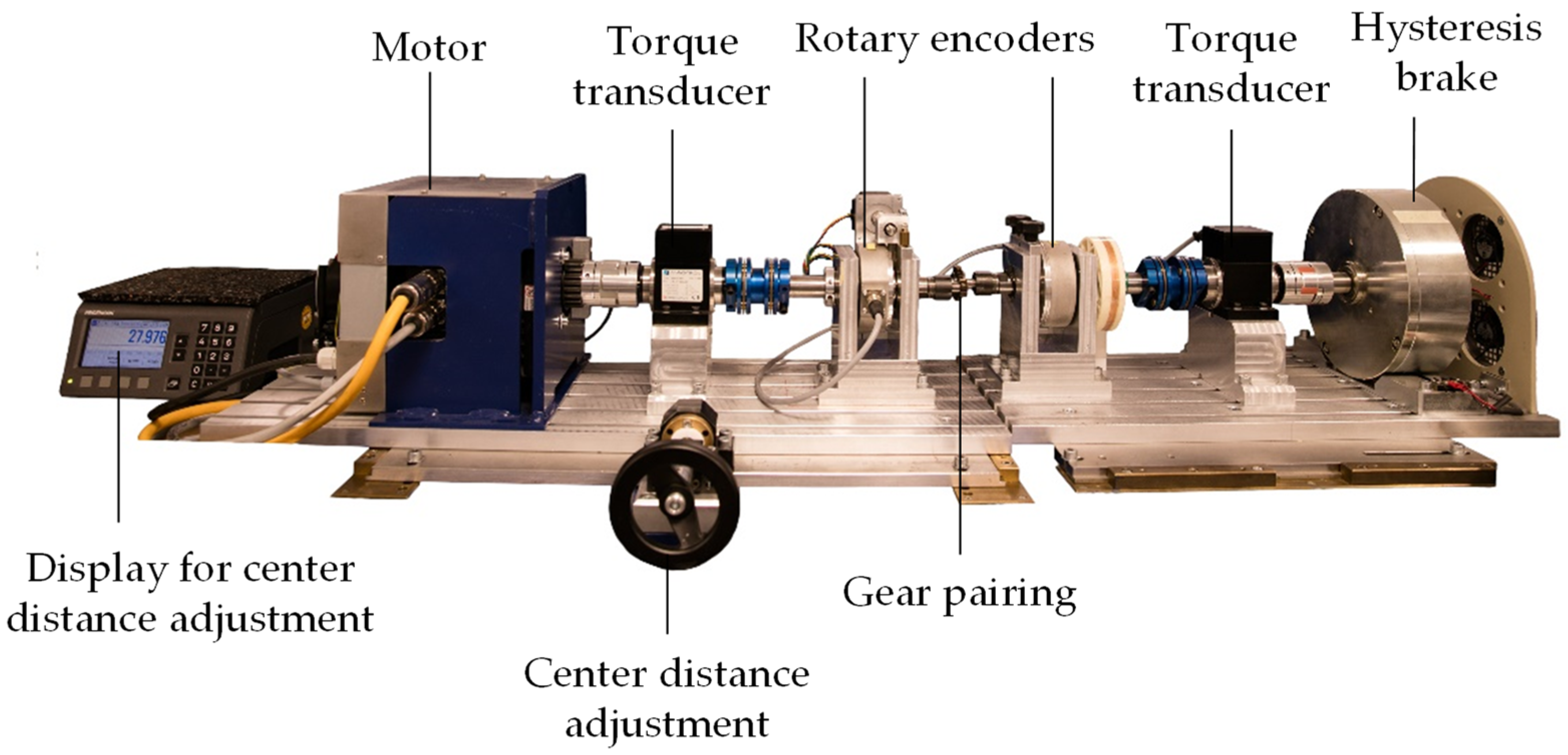
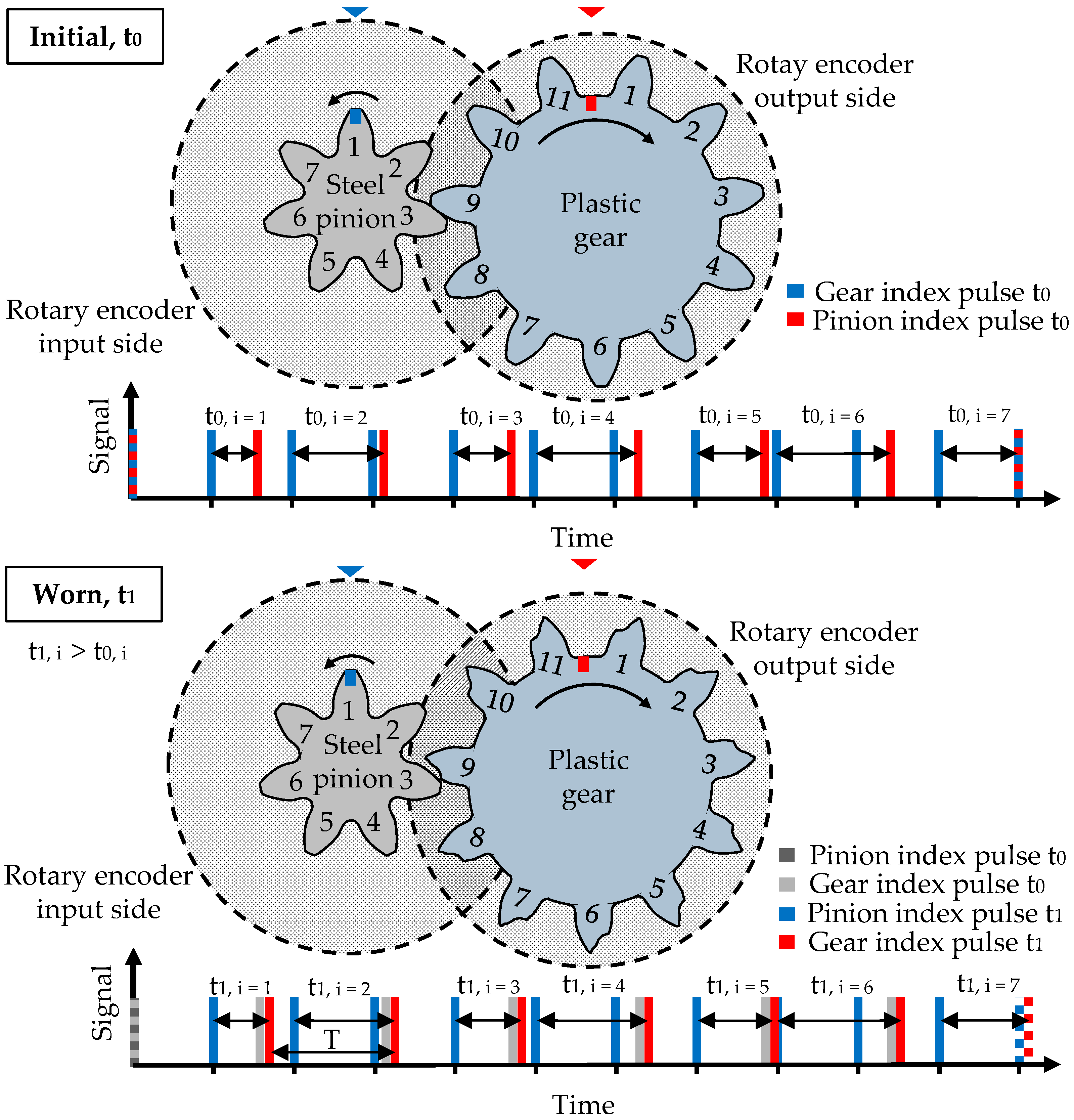
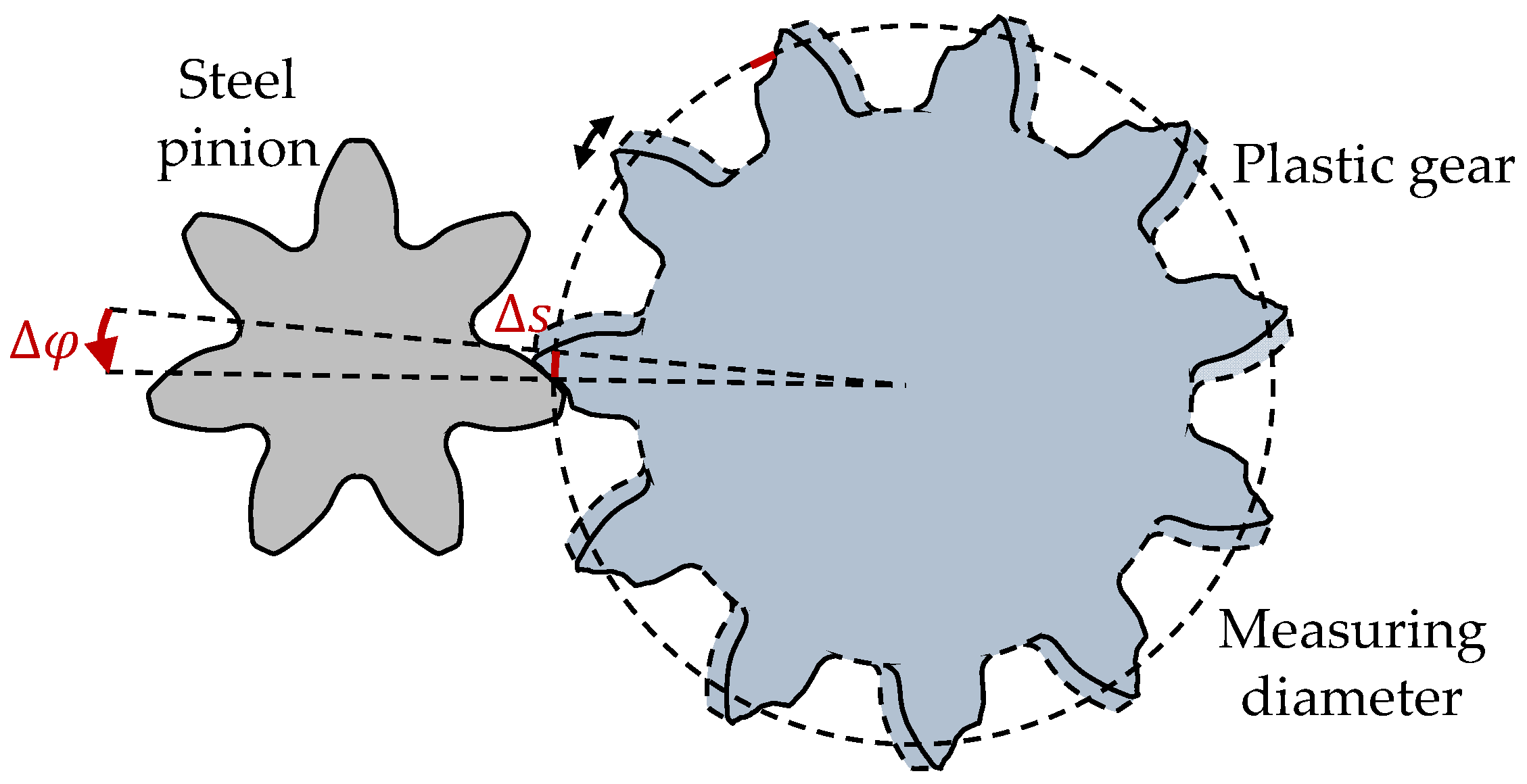
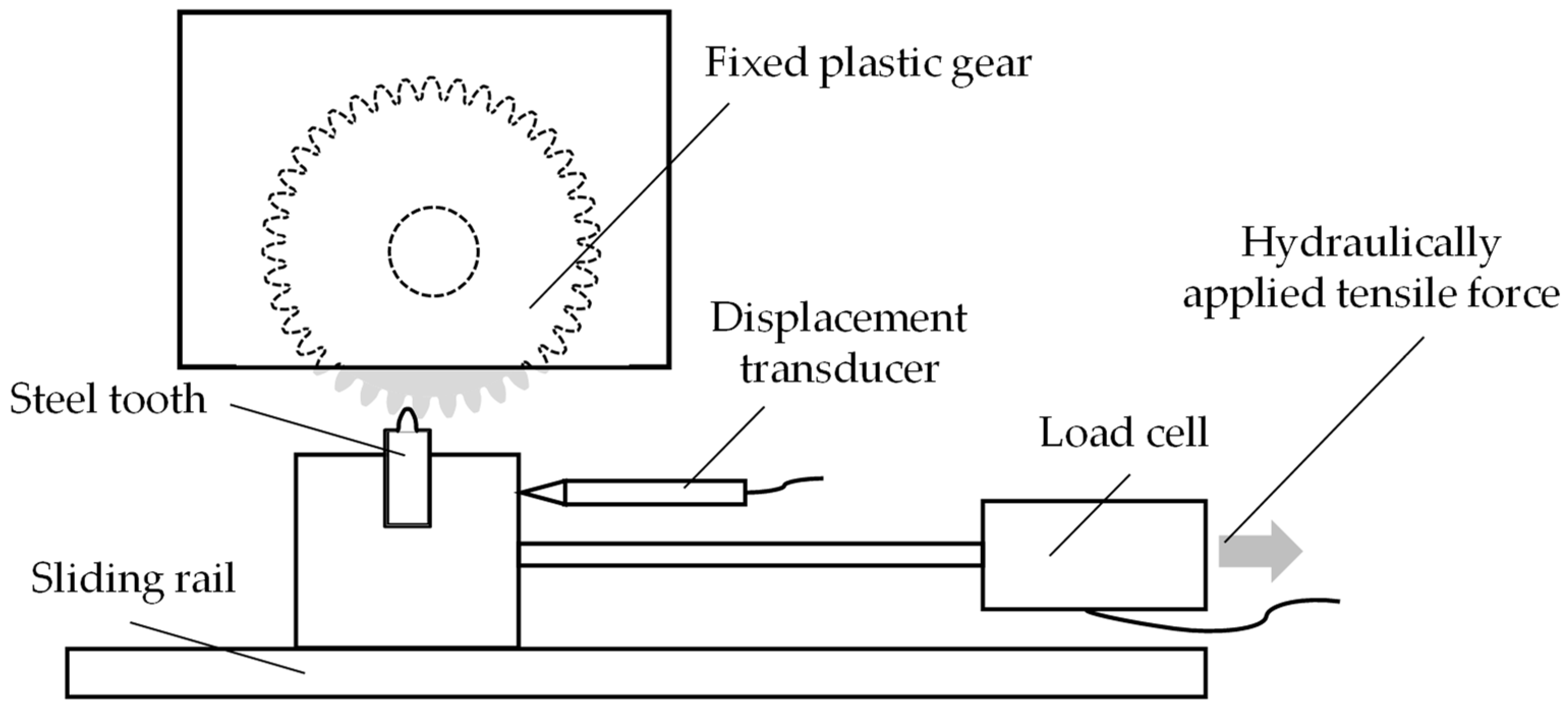

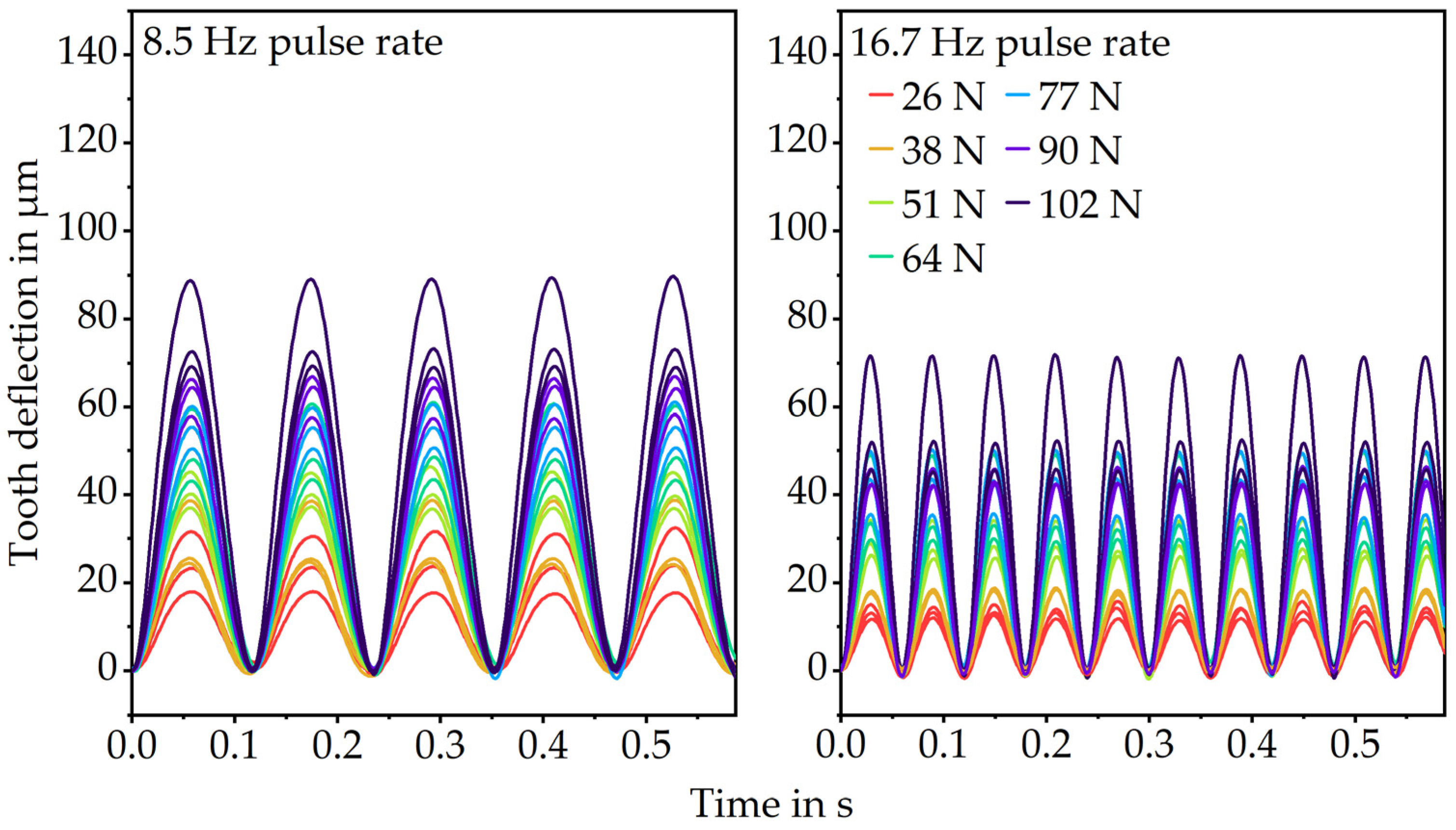

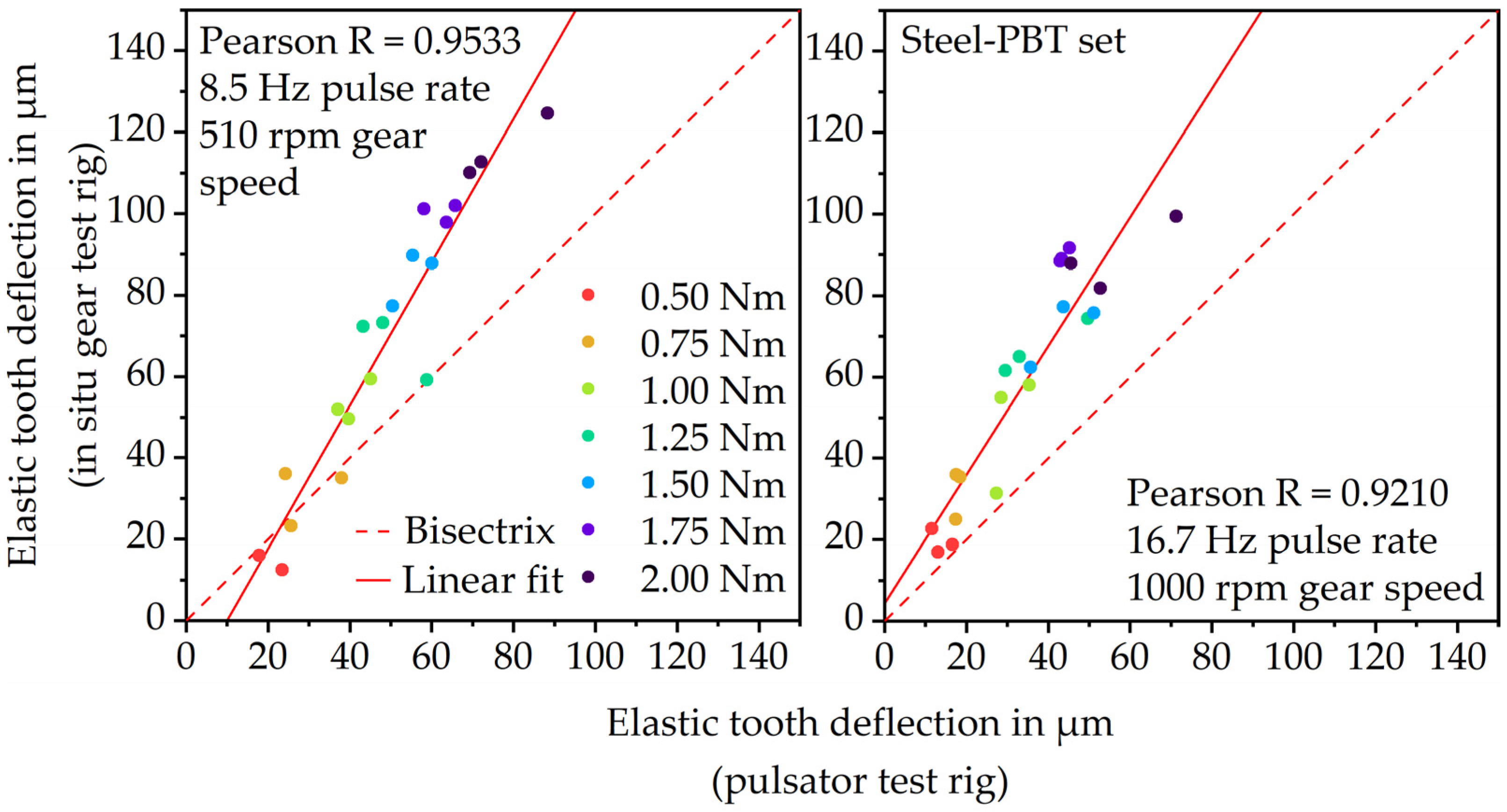
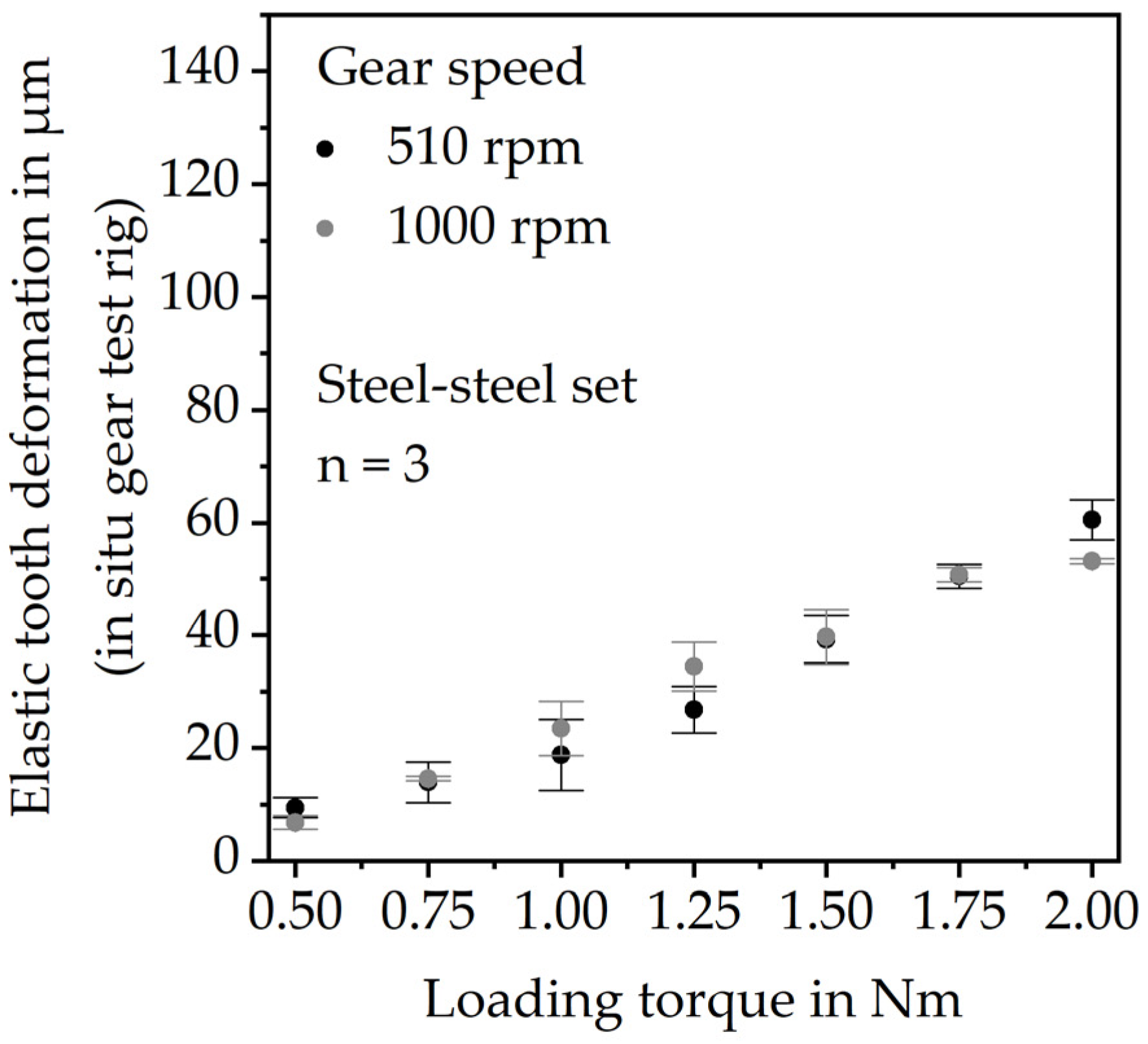

| DIN 867 | Steel Pinion | Plastic Gear | Steel Gear |
|---|---|---|---|
| Picture |  | 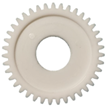 | 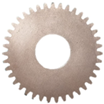 |
| Material | Hardened 100Cr6 | PBT Ultradur B4520 | Hardened 16MnCr5 |
| Module | 1 mm | ||
| Pressure angle | 20° | ||
| Number of teeth | 17 | 39 | |
| Gear width | 8 mm | 6 mm | |
| Profile shift | 0.2045 mm | −0.3135 mm | |
| Processing Parameter | Parameter Setting |
|---|---|
| Screw diameter | 18 mm |
| Mass temperature | 260 °C |
| Mold temperature | 60 °C |
| Injection/Holding/Cooling/Cycle time | 2.2 s/6 s/25 s/42.8 s |
| Holding pressure | 600 bar |
| Cylinder temperature profile (Nozzle → indentation) | 260 °C/250 °C/240 °C/230 °C/90 ° C |
Disclaimer/Publisher’s Note: The statements, opinions and data contained in all publications are solely those of the individual author(s) and contributor(s) and not of MDPI and/or the editor(s). MDPI and/or the editor(s) disclaim responsibility for any injury to people or property resulting from any ideas, methods, instructions or products referred to in the content. |
© 2023 by the authors. Licensee MDPI, Basel, Switzerland. This article is an open access article distributed under the terms and conditions of the Creative Commons Attribution (CC BY) license (https://creativecommons.org/licenses/by/4.0/).
Share and Cite
Herzog, C.; Drummer, D. Test Rig for the In Situ Measurement of the Elastic Tooth Deflection of Plastic Gears. Polymers 2023, 15, 1732. https://doi.org/10.3390/polym15071732
Herzog C, Drummer D. Test Rig for the In Situ Measurement of the Elastic Tooth Deflection of Plastic Gears. Polymers. 2023; 15(7):1732. https://doi.org/10.3390/polym15071732
Chicago/Turabian StyleHerzog, Christoph, and Dietmar Drummer. 2023. "Test Rig for the In Situ Measurement of the Elastic Tooth Deflection of Plastic Gears" Polymers 15, no. 7: 1732. https://doi.org/10.3390/polym15071732
APA StyleHerzog, C., & Drummer, D. (2023). Test Rig for the In Situ Measurement of the Elastic Tooth Deflection of Plastic Gears. Polymers, 15(7), 1732. https://doi.org/10.3390/polym15071732






